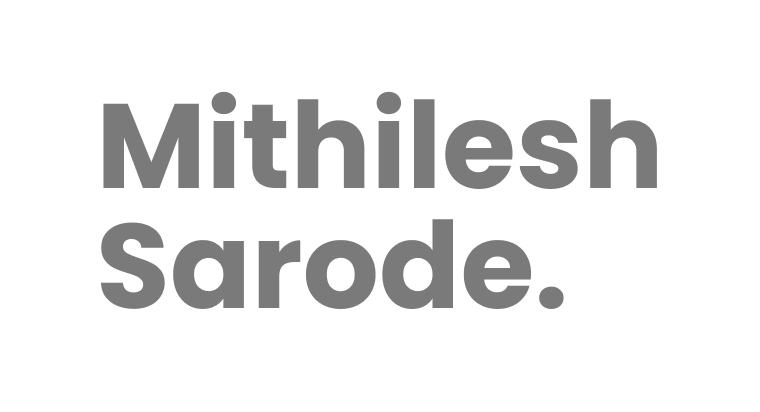Ajit-Vivek Museum, Khetri
Swami Vivekananda was previously known by the name Narendra. “Vivekananda” was given to him by Raja Ajit Singh of Khetri.
Client
Ramakrishna Mission, Khetri
Project Delivered
August 2018
Duration
16 Months
Ajit-Vivek Museum, Khetri
This project started as my final year thesis project back in 2013. It eventually turned into a full fledged client project.
Ajit-Vivek museum is a multimedia based biographical museum that offers an insight into the life and therefore the teachings of Swami Vivekananda.
The museum also features a rich cultural and spiritual heritage that is important to and engages the residents of Khetri, a legacy that fascinates the visitors from all over the world, as they learn about the very special relationship of Swami Vivekananda and Khetri.
The Challenges
- Transport the visitors into a different time and space (the times in which Swami Vivekananda lived), thereby enhancing their capacity to receive the intended communication
- Chalk out a narrative that brings out the essence of the life and teachings of Swami Vivekananda through immersive modern display methods and technologies along with traditional craft practices, thereby contributing to a new kind of design.
- Achieve a balance, through the selection of appropriate metaphors and levels of abstractions, in the narrative, that is essentially documented history.
- Ensure that the narrative, though emotional in nature, retains objectivity so that neither the believer nor the scholar can challenge its credibility.
My Role
- Conducted secondary research, conceptualized 6 ideas from the research.
- As an individual contributor, I developed a proof of concept for 2 finalized ideas of the 6.
- Created the user experience flow of the 2 installations.
- Detailed out the macro and micro level interactions.
- Defined a guideline for the visual design, sound design, and the product design.
- I managed a team of visual designers, sound designers, animators and product designers to refine the user flow, interface level details and the product aesthetics.
- Worked with the architects and engineers to develop the final production level drawings.
- Coordinated the production process with fabricators to develop the final product.
- After numerous iterations, when the final product was ready, I assisted in installing the final product on site.


Children
Devotees


Experts
Locals

Tourists
Understanding Visitor Profile
Vivek Darshan is a visitor centric museum, and its ultimate judge of effectiveness will be the visitor that comes to this museum not once, but over and over again.
The average devotee of the Mission, local, national and nonresident; rural, semi-urban and urban milieu; tourists, national and international; the devout and the sceptics; the non-literate, the scholar and the aesthete; children,
teenagers, young and the aged. Each one will find something in this Museum that interests, informs or touches them, irrespective of who they are, from where they come and whatever may be their faiths.

Knowing the Space
The proposed museum to be located at the Futteh Billass palace in Khetri is to focus on two topics. The primary focus is to be on the presentation of the story of the life of Swami Vivekananda. Concurrently, there requires being a focused presentation on Khetri in terms of its history and urban heritage.
The Journey

Zone
Swamiji’s visit to the America
Medium
Simulated ship deck with animated interactive content
To depict Swamiji’s journey to the west and his experiences on the way through an interactive experience.
Intent
To tell the visitors about the first visit of Swami Vivekananda to America in 1893 to attend the Parliament of World Religions held in Chicago.
An attempt is made to make the entire episode not just anecdotal but rather bring in the learning that Swamiji had as he visited various countries.
Content treatment
The entire story of the exhibit is based on a letter written by Swamiji from Japan to his friend Alasinga Perumal in India while he was travelling to America. The places, people and the objects described in the letter are recreated from image references of those times. Since the majority of the journey happened on a ship, I decided to enhance the visitor experience by simulating a physical ship deck and converting the description into an animated movie.
User Interaction
The movie begins to play as soon as the helm of the ship is rotated.
Wisdom Well

Zone
Publications
Medium
Interactive Well with animated videos
To spread awareness on Ramakrishna mission’s ideals and values.
Intent
The motive behind this installation is to make the visitors of the museum aware of some of the articles and stories published by the Ramakrishna Mission in their publications.
Content treatment
The Wisdom Well is an amalgamation of 2 different ideas. The idea of Wisdom is derived from the publications started by Swami Vivekananda. Having been in print for more than 120 years, one can imagine them to be the manifestation of the wisdom of Ramakrishna, Vivekananda and Vedanta.
The well is inspired from the story of the frog in a well that he had narrated at the Parliament of World’s Religions.
User Interaction
The visitor of the museum interacts with the installation by pulling out the bucket suspended inside the well. Every time the bucket is pulled out, it brings out a new story with it and narrates it to the visitors.


